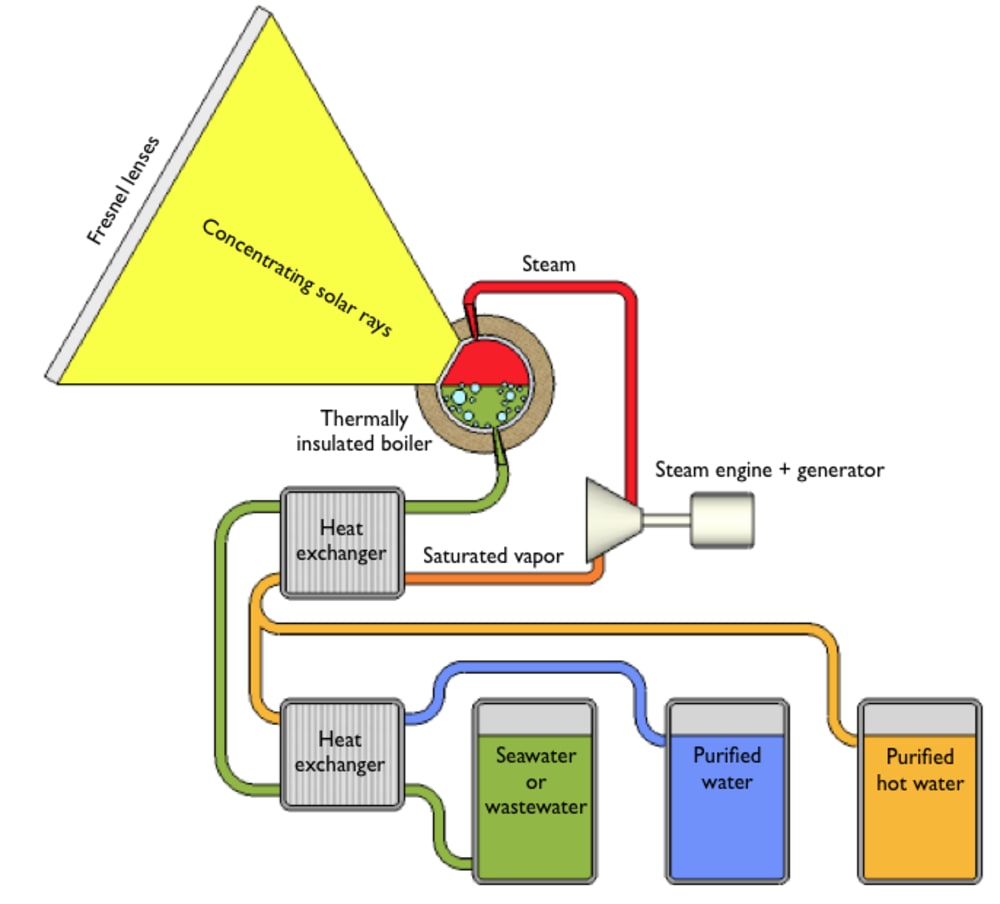Water is a precious resource that is scarce in many parts of the world and is gradually becoming insufficient in the rest of the planet due to population growth and water contamination. It is predicted that in the next decades, water will substitute oil as the principal driver of the global economy.
Wastewater purification and seawater desalinization are two processes that could guarantee fresh water supply for most parts of the world. Water purification by distillation is a low-tech and low-cost process that can be easily implemented anywhere on the world. The only major drawback is that it consumes a lot of energy. However, the sun is an abundant and inexhaustible energy source that is available almost anywhere on the planet that could be used for water purification by distillation.
Here a water purification system by solar distillation is presented. It can purify any kind of water: black, grey, brown, brackish and seawater. The system could produce both hot and cool water for domestic, commercial or industrial use. It consists mainly in a solar concentrator, a water boiler, a steam engine, two heat exchangers and water reservoirs.
The solar concentrator uses a 1x1 meter fresnel lens and a special fresnel-type lens that allows the system to work without a solar tracker. The concentrated solar rays are directed to the boiler where the non-potable water is converted into steam, leaving behind any sort of impurities. The steam is then fed into a steam engine. This engine is an artisanal positive displacement steam engine, which can be low cost and insensitive to the presence of condensed water. The steam engine produces mechanical energy that is transferred to a generator. The generator produces electrical energy that is used to operate auxiliary components like water pumps, valves, and temperature sensors. Some energy could be used to pump water to a water tower or to a water distribution network. Two heat exchangers are used in order to recover part of the thermal energy and increase the energy efficiency or the system.
The system is better than conventional solar distillation systems that do not use solar concentration because solar concentration improves the efficiency of the system, achieve higher temperatures that sterilizes the treated water and allows the integration of a Rankine Cycle in order to produce more electricity using the waste heat of the system. The system can also produce both hot and cool water.
The installation cost of the system should be around 30 USD per liter or 150 USD per square meter of concentrator surface. Operation costs would be minimal as solar energy and wastewater are free.
The boiler, heat exchangers, reservoirs, and the steam engine can be manufactured both artisanally and industrially. Which gives flexibility in terms of production and distribution costs. Plastic fresnel lenses are produced industrially in many sizes.
The market for the system is huge, as it is a low cost water purification system that can work anywhere in the world where sunlight is available.
Like this entry?
-
About the Entrant
- Name:Leonardo De Silva Muñoz
- Type of entry:individual
- Patent status:none

